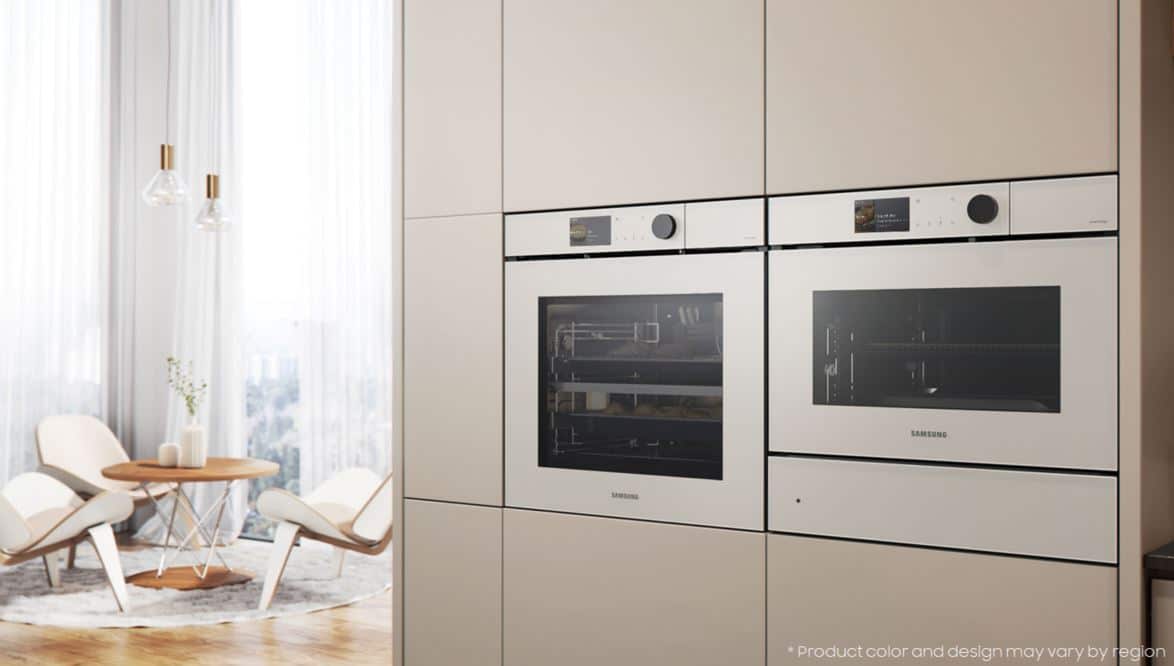Samsung introduced a connected oven poetically named Bespoke AI™ Oven at CES in Las Vegas in 2023. Equipped with a camera, it allows you, among other things, to broadcast live the cooking of your favorite dishes. This innovation forces me to think about the waste of technological resources and the gap between innovation and customer expectations.
The Samsung Bespoke AI™ Oven is an oven to broadcast your cooking live
At the 2023 edition of CES in Las Vegas, Samsung presented a connected oven equipped with a camera. This camera, coupled with image analysis algorithms, can monitor and optimize food cooking. The camera can even be used to broadcast live cooking.
Here’s how Samsung describes its innovation:
AI Pro Cooking optimizes cooking settings while monitoring food. Using an internal camera and powerful AI, the oven’s Sense Inside function […] can recommend cooking settings by recognizing 80 different dishes and ingredients. If the oven is set to cook a recognized dish using the oven’s recommended cooking mode, temperature, and time, the AI Pro Cooking system will even send users notifications to prevent the dish from being overcooked.
Of course, you’ll need to connect your oven to your Wi-Fi to take advantage of these features.
The Bespoke AI™ Oven was introduced along with a connected refrigerator. So, the direction Samsung is taking is clear: connect appliances.
50% of connectable appliances are not connected to the Internet.
Consumers are shunning connected appliances
All this is nothing new since the first connected appliances appeared on the market more than a decade ago. Every manufacturer has invested in this trend. In this blog, we have analyzed in detail the secret strategy of Nespresso with its connected machine, and I predicted in February 2019 the collapse of connected speakers.
50% of connected devices are not connected to the Internet
But what about the efficiency of the manufacturers’ strategies to connect our devices?
We must admit that the results are disappointing. A survey showed that less than half of LG’s connectable appliances were connected to the Internet. Indeed, 50% of the connectable appliances are not connected to the Internet. Whirlpool mentioned a rate of more than 50% of appliances connected to the Internet but without giving more details. So, the numbers may need to be better.
Why persist in connected appliances?
But why do manufacturers persist in the all-connected path if customers turn away from it? Because it makes them money.
Connecting an appliance allows the manufacturer to monitor your usage. In the case of Nespresso, I had explained, for example, that Nespresso was monitoring your consumption of capsules to avoid you testing the (cheaper) competition. LG does the same thing with its connected fridges. By monitoring usage, it can send its customers notifications when water filters need to be changed. This opens the door to preventive maintenance and the sale of spare parts.
The result is that “connected” customers are far more profitable than those who are not because manufacturers can sell them “consumables” and spare parts more frequently. A golden goose that also fits very well with a subscription business model.
A waste of technological resources
In the 1960s, when France embarked on its nuclear power program, energy had become so abundant that the government pushed the French to heat with electric radiators. In the same situation, Belgium found nothing better than to light its highways at night. The resources were so abundant that they had to be used at all costs, even if it meant wasting them.
Today, the situation is the same with data. Fiber optics, 5G, … the amount of data that can pass through the networks has never been so important, and we have to invent new uses to fill the pipes. This is the boomerang effect. The more resources are available, and the more users adapt to use them.
Innovations in household appliances are the same thing. It is necessary to use bandwidth at all costs, to collect data, and to put artificial intelligence in everything, even if it makes no sense. Henry Kim, the head of ThinQ (LG’s advanced technology platform), complained about it in an interview with the Wall Street Journal. About the embedded features in connected home appliances, he states:
The problem is that consumers need to see the real value manufacturers see in how this data can help them in the long term. So, consumers want to spend less time connecting [their appliances].
In conclusion
Instead of repairability, manufacturers prefer the futility of AI-driven connected uses. All this is only financially motivated and sweeps aside the societal issues in which all manufacturers should participate. When I see the bad faith with which the food industry justifies shrinkflation, I remain extremely pessimistic about the ability of this world to save itself.
We have to face the facts. The capacity for innovation of human beings is being misused. It only serves to feed consumerism rather than to solve the most important issues. The futility of Samsung’s innovations is a symptomatic illustration of the double talk of these large companies that surround themselves with an eco-responsible narrative. Beyond the pretense, all this leaves me with a bitter taste. It’s all nonsense, and I can only be disappointed.
Posted in Marketing.

